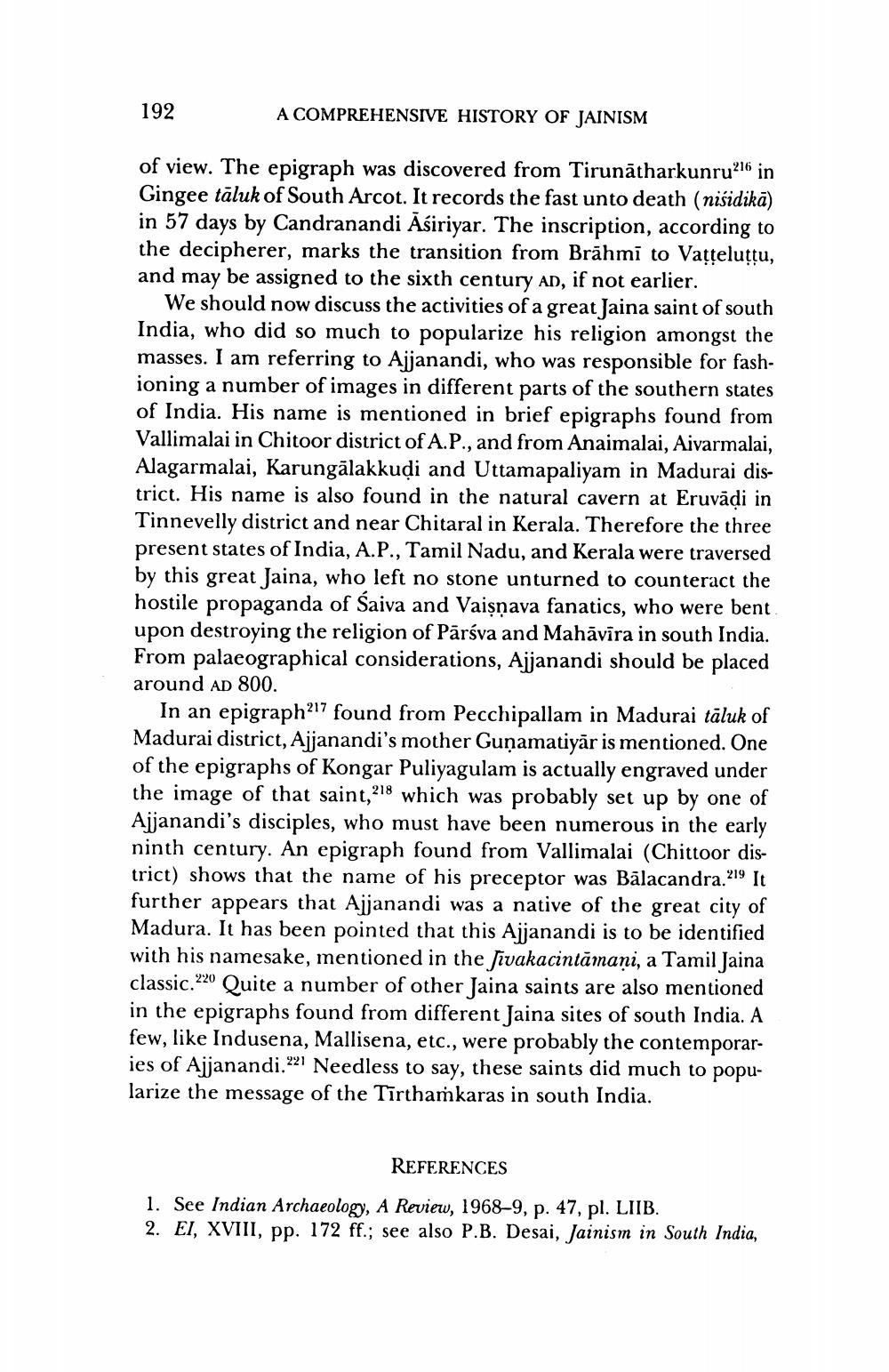________________
A COMPREHENSIVE HISTORY OF JAINISM
of view. The epigraph was discovered from Tirunatharkunru216 in Gingee taluk of South Arcot. It records the fast unto death (nisidikā) in 57 days by Candranandi Asiriyar. The inscription, according to the decipherer, marks the transition from Brahmi to Vaṭṭeluṭṭu, and may be assigned to the sixth century AD, if not earlier.
We should now discuss the activities of a great Jaina saint of south India, who did so much to popularize his religion amongst the masses. I am referring to Ajjanandi, who was responsible for fashioning a number of images in different parts of the southern states of India. His name is mentioned in brief epigraphs found from Vallimalai in Chitoor district of A.P., and from Anaimalai, Aivarmalai, Alagarmalai, Karungālakkuḍi and Uttamapaliyam in Madurai district. His name is also found in the natural cavern at Eruvāḍi in Tinnevelly district and near Chitaral in Kerala. Therefore the three present states of India, A.P., Tamil Nadu, and Kerala were traversed by this great Jaina, who left no stone unturned to counteract the hostile propaganda of Śaiva and Vaiṣṇava fanatics, who were bent upon destroying the religion of Pārśva and Mahāvīra in south India. From palaeographical considerations, Ajjanandi should be placed around AD 800.
192
In an epigraph217 found from Pecchipallam in Madurai tāluk of Madurai district, Ajjanandi's mother Guṇamatiyar is mentioned. One of the epigraphs of Kongar Puliyagulam is actually engraved under the image of that saint,218 which was probably set up by one of Ajjanandi's disciples, who must have been numerous in the early ninth century. An epigraph found from Vallimalai (Chittoor district) shows that the name of his preceptor was Bālacandra.219 It further appears that Ajjanandi was a native of the great city of Madura. It has been pointed that this Ajjanandi is to be identified with his namesake, mentioned in the Jivakacintamani, a Tamil Jaina classic.220 Quite a number of other Jaina saints are also mentioned in the epigraphs found from different Jaina sites of south India. A few, like Indusena, Mallisena, etc., were probably the contemporaries of Ajjanandi.221 Needless to say, these saints did much to popularize the message of the Tīrthamkaras in south India.
REFERENCES
1. See Indian Archaeology, A Review, 1968-9, p. 47, pl. LIIB.
2. EI, XVIII, pp. 172 ff.; see also P.B. Desai, Jainism in South India,




